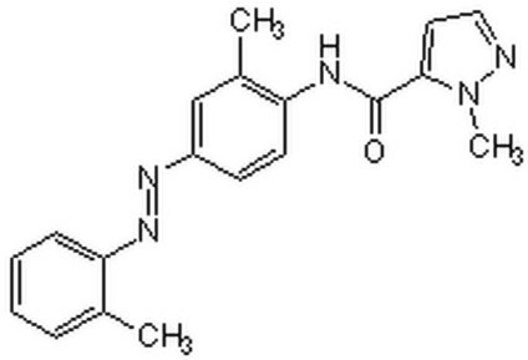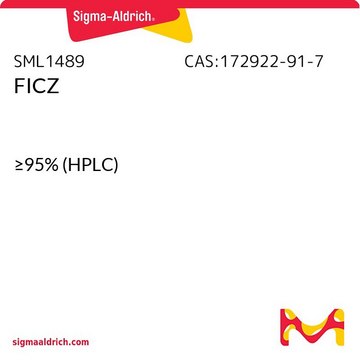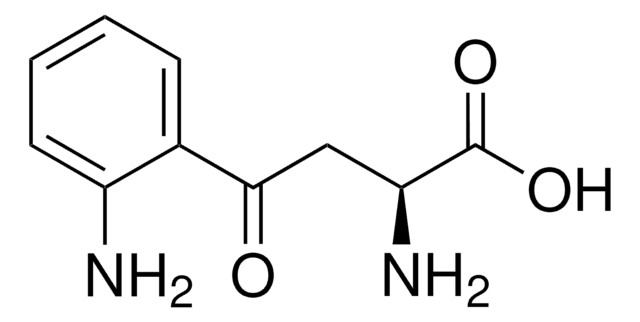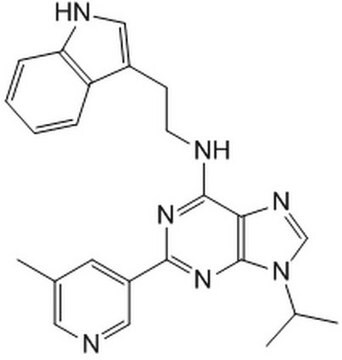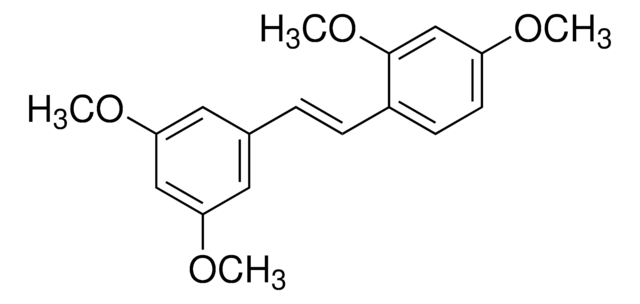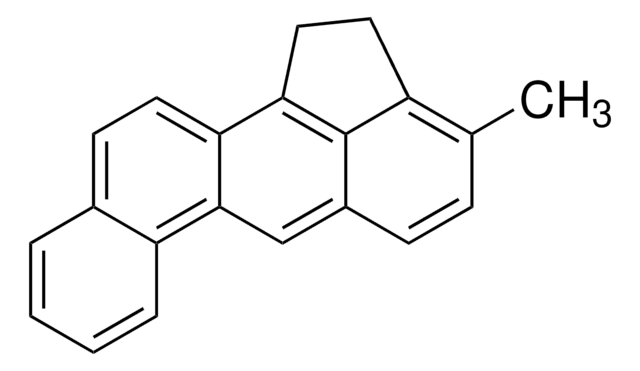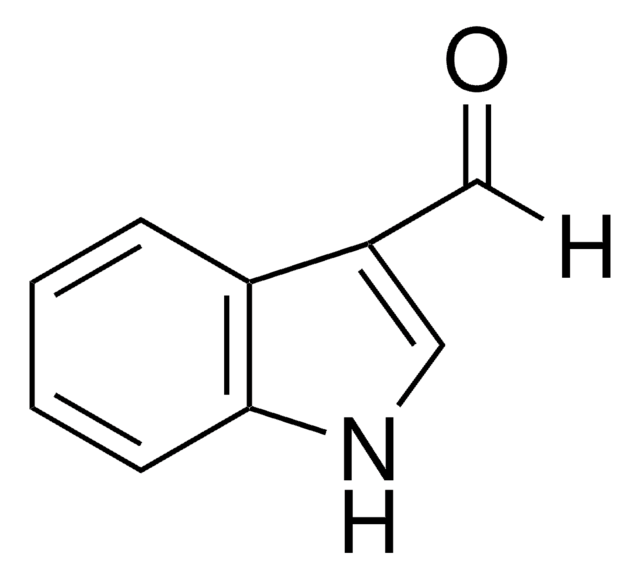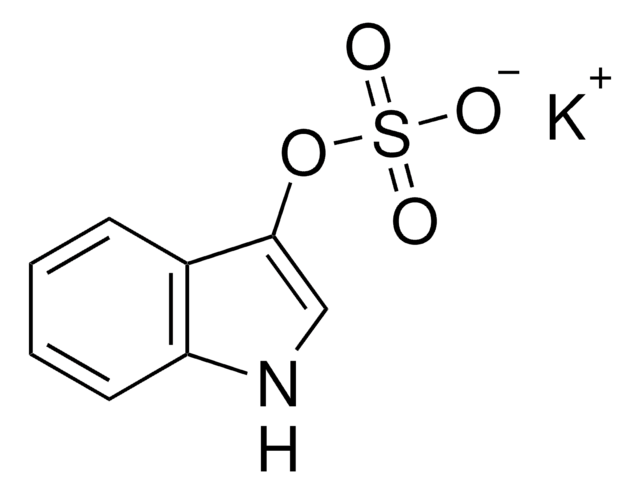Wichtige Dokumente
C8124
CH-223191
≥98% (HPLC), powder, AhR antagonist
Synonym(e):
1-Methyl-N-[2-methyl-4-[2-(2-methylphenyl)diazenyl]phen yl-1H-pyrazole-5-carboxamide, 2-Methyl-2H-pyrazole-3-carboxylic acid (2-methyl-4-o-tolylazo-phenyl)-amide
About This Item
Empfohlene Produkte
Produktbezeichnung
CH-223191,
Assay
≥98% (HPLC)
Qualitätsniveau
Form
powder
Farbe
orange-brown
Löslichkeit
DMSO: ≥20 mg/mL
Lagertemp.
2-8°C
SMILES String
Cc1cc(ccc1NC(=O)c2ccnn2C)\N=N\c3ccccc3C
InChI
1S/C19H19N5O/c1-13-6-4-5-7-17(13)23-22-15-8-9-16(14(2)12-15)21-19(25)18-10-11-20-24(18)3/h4-12H,1-3H3,(H,21,25)/b23-22+
InChIKey
LKTNEXPODAWWFM-GHVJWSGMSA-N
Anwendung
Biochem./physiol. Wirkung
Leistungsmerkmale und Vorteile
Lagerklassenschlüssel
11 - Combustible Solids
WGK
WGK 3
Flammpunkt (°F)
Not applicable
Flammpunkt (°C)
Not applicable
Hier finden Sie alle aktuellen Versionen:
Besitzen Sie dieses Produkt bereits?
In der Dokumentenbibliothek finden Sie die Dokumentation zu den Produkten, die Sie kürzlich erworben haben.
Kunden haben sich ebenfalls angesehen
Artikel
We offer many products related to non-steroid nuclear receptors for your research needs.
Unser Team von Wissenschaftlern verfügt über Erfahrung in allen Forschungsbereichen einschließlich Life Science, Materialwissenschaften, chemischer Synthese, Chromatographie, Analytik und vielen mehr..
Setzen Sie sich mit dem technischen Dienst in Verbindung.